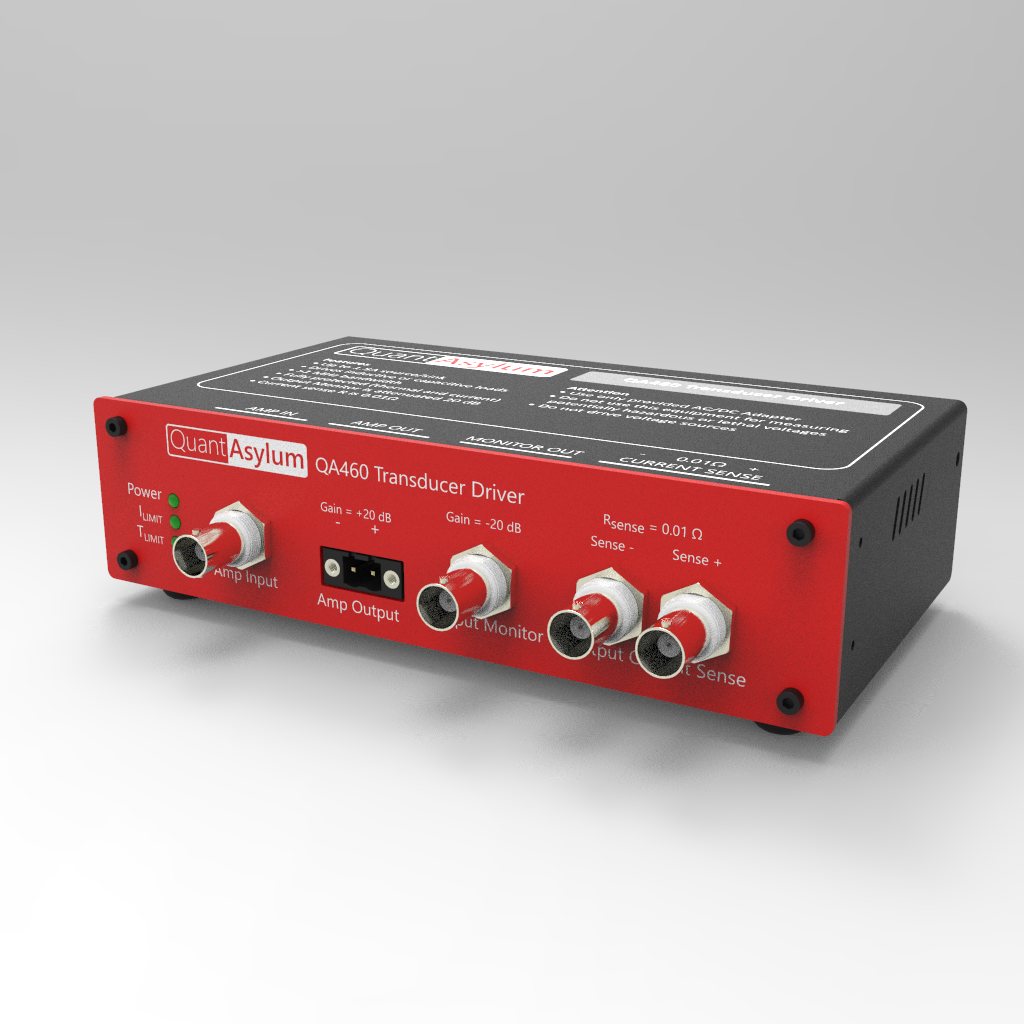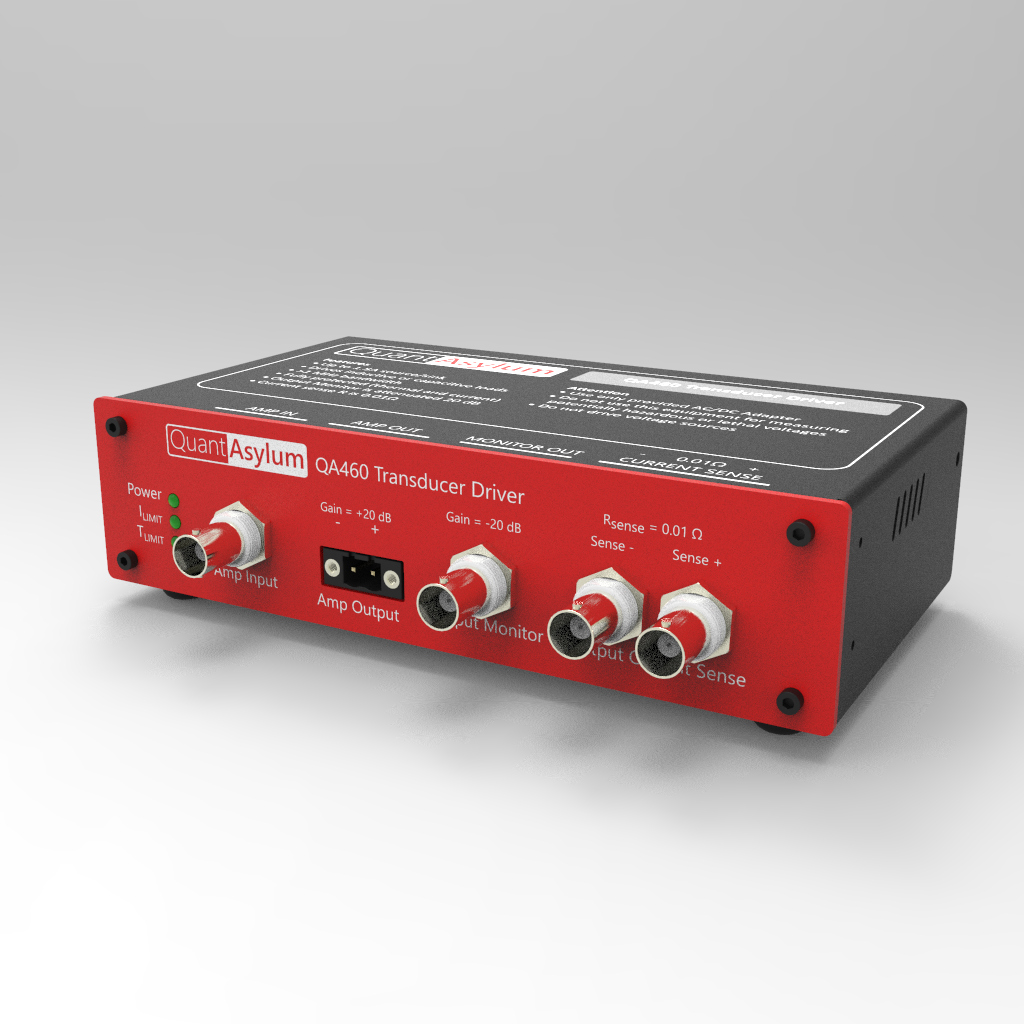QuantAsylum
QA461 Transducer Driver
QA461 Transducer Driver
Couldn't load pickup availability
2-Dec-2024: The QA461 it not available for order and will be replaced by the QA462. The QA462 will offer greater accuracy and more gain ranges for current sensing.

The QA461 is a general-purpose power amplifier designed to drive everything from speakers and other reactive loads you might encounter while developing your products. The output is fully protected against over-current and over-temperature, and has heavy -duty Schottky diodes on the output to help cope with output excursions beyond the supply rails.
The amplifier has a gain of 20 dB, and an output monitor with a gain of -20 dB, allowing you to monitor the output of the QA461. So, if you input a signal at -10 dBV, the amplifier output will be at 10 dBV, and the monitor port will show the signal across the load at -10 dBV.
The QA461 makes improvements to the QA460 in the area of output current measurement. On the QA460, there was a 0.01 ohm sense resistor in series with the output, and the differential signals across that sense resistor were available on the front panel. This would allow you to make a voltage measurement across the sense resistor to determine current and thus load impedance. On the QA461, the differential measurement is made inside the QA461 with an INA199A gain-of-50 shunt current monitor. Combined with a 0.02 ohm resistor, this delivers an effective output impedance of 1 ohm while burdening the load with just a 0.02 ohms of additional amp output impedance.
To measure output current, simply route the sense resistor output of the QA461 to the right channel on the QA40x Audio Analyzer, and you can make fast impedance measurements of speakers and other low impedance transducers at up to 1W or more. See this link here for more details using the QA460. For the QA461, it would be a single connection to the QA40x right channel input.
The QA461 includes a 12V/1.5A brick. For US customers, this will be a Tri-Mag L6R18-120. For customers outside the US, this will be a Phihong PSAA18U-120L6. Both have UL/CB/CE safety ratings, Class B EMI, 90-264V AC inputs, and Level VI efficiency.
The front panel connector mates with a Molex 39534-0002, which is available at Mouser.
For customers outside of the US, you will need to provide your own cord to go from your local power standard to the IEC C14 input.
Share


